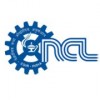
i
Aragen Life
Sciences
Filter interviews by
Aragen Life Sciences Research Associate Interview Questions and Answers
15 Interview questions
Chromatography is a technique used to separate and analyze mixtures of chemicals based on their properties.
Chromatography involves a stationary phase and a mobile phase that interact differently with the components of the mixture.
The components of the mixture separate based on their affinity for the stationary phase versus the mobile phase.
Common types of chromatography include gas chromatography, liquid chromatog...
Aldol condensation, Michael addition, Wittig reaction, Grignard reaction are some name reactions to form new c-c bond without metal catalyst.
Aldol condensation involves the reaction of an enolate ion with an aldehyde or ketone to form a β-hydroxy carbonyl compound.
Michael addition involves the addition of a nucleophile to an α,β-unsaturated carbonyl compound.
Wittig reaction involves the reaction of a phosphorus yl...
To separate acid from an acid-base mixture in liquid state, we can use various methods such as solvent extraction, distillation, or ion exchange.
Solvent extraction involves adding a solvent that selectively dissolves the acid, then separating the two layers.
Distillation involves heating the mixture to vaporize the acid, then condensing it back into a separate container.
Ion exchange involves passing the mixture thr...
Synthesized 2-methylcyclohexanol from cyclohexene using acid-catalyzed hydration.
Started with cyclohexene and added concentrated sulfuric acid to protonate the double bond.
Water was then added to the reaction mixture, which attacked the carbocation intermediate to form a tertiary alcohol.
The product was then extracted and purified via distillation.
2-methylcyclohexanol was characterized using IR and NMR spectroscop...
I have experience handling various oxidation and reduction reagents in my previous research work.
I have worked with common oxidizing agents such as potassium permanganate, hydrogen peroxide, and chromic acid.
I have also handled reducing agents like sodium borohydride, lithium aluminum hydride, and diisobutylaluminum hydride.
I am familiar with the safety precautions and proper handling techniques for these reagents...
Chloro and bromo pattern ratio refers to the ratio of the number of chloro and bromo substituents on a molecule.
The chloro and bromo pattern ratio is calculated by dividing the number of chloro substituents by the number of bromo substituents.
For example, if a molecule has 2 chloro substituents and 1 bromo substituent, the chloro and bromo pattern ratio would be 2:1.
The chloro and bromo pattern ratio can be used t...
HPLC stands for High Performance Liquid Chromatography. It is a technique used to separate, identify, and quantify components in a mixture.
HPLC works on the principle of differential partitioning of analytes between a stationary phase and a mobile phase.
The stationary phase is a solid or liquid material packed into a column, while the mobile phase is a liquid solvent that carries the sample through the column.
Anal...
I have handled various instruments in my research work.
Microscopes for observing samples at high magnification
Spectrophotometers for measuring the absorbance or emission of light by substances
Centrifuges for separating components of a mixture based on density
PCR machines for amplifying DNA sequences
Electrophoresis equipment for separating DNA, RNA, or proteins based on size and charge
Understanding 1H-NMR values of organic compounds and analyzing LCMS involves knowledge of spectroscopy and chromatography techniques.
1H-NMR values provide information about the chemical environment of hydrogen atoms in a molecule.
Analyzing LCMS involves separating and detecting ions based on their mass-to-charge ratio.
Interpretation of 1H-NMR and LCMS data requires knowledge of organic chemistry and spectroscopy t...
Chromatography is a technique used to separate and analyze mixtures. HPLC is a type of chromatography used for high-resolution separation.
Chromatography involves passing a mixture through a stationary phase, which separates the components based on their properties.
HPLC uses high pressure to force the mixture through a column packed with a stationary phase, allowing for more precise separation.
HPLC is commonly used...
Aragen Life Sciences Research Associate Interview Experiences
29 interviews found
I appeared for an interview in Mar 2025, where I was asked the following questions.
- Q1. Can you describe the project you completed during your master's program?
- Q2. About critical analytical problem solving questions
I appeared for an interview in Dec 2024, where I was asked the following questions.
- Q1. NMR value of structure
- Q2. Organic synthesis conversion
- Q3. Mass spectroscopy,
MCQ Test based on Your stream U studied in Your PG
(2 Questions)
- Q1. Related to Chemistry
- Q2. Related to Chemistry .
I appeared for an interview before Jun 2024, where I was asked the following questions.
- Q1. Named reaction,all about characterazatuon
- Q2. Stero chemistry
(1 Question)
- Q1. Name reactions and mechanism
- Ans.
Name reactions are specific organic chemical reactions that have been given a name.
Name reactions are important in organic chemistry as they allow chemists to communicate efficiently about specific reactions.
Some examples of name reactions include the Diels-Alder reaction, Grignard reaction, and Friedel-Crafts reaction.
Mechanisms of name reactions involve the step-by-step process of breaking and forming chemical bonds.
...
(1 Question)
- Q1. About your self
I applied via Campus Placement

English ,Aptitude and reasoning
(1 Question)
- Q1. What is chromatography
- Ans.
Chromatography is a technique used to separate and analyze mixtures of chemicals based on their properties.
Chromatography involves a stationary phase and a mobile phase that interact differently with the components of the mixture.
The components of the mixture separate based on their affinity for the stationary phase versus the mobile phase.
Common types of chromatography include gas chromatography, liquid chromatography...
(1 Question)
- Q1. Tell me about your self
- Ans.
I am a dedicated researcher with a strong background in data analysis and a passion for advancing scientific knowledge.
Educational Background: I hold a Master's degree in Biology, where I focused on molecular genetics.
Research Experience: I worked as a research intern at XYZ Lab, where I conducted experiments on gene expression.
Technical Skills: Proficient in statistical software like R and Python for data analysis.
Col...
I appeared for an interview in Oct 2022.
In first round there is a total of 100 question 50 from chemistry, 25 from maths and 25 from english. You have to score atleast 50 to clear the 1st round.
(5 Questions)
- Q1. First they ask some basic naming rxns for me they asked curtius rxn
- Q2. 2nd they ask basic concepts in stereochemistry
- Q3. 3rd they ask basics in assymetric synthesis
- Q4. 4th they ask abt LCMS and HNMR..
- Q5. 5th they ask about some oxidation and reducing agents.
(1 Question)
- Q1. They discuss about company and salary structure..
Interview Preparation Tips
I applied via Campus Placement and was interviewed before Feb 2023. There were 3 interview rounds.
They are ask about project details what I did in MSC
(1 Question)
- Q1. They are asking questions basic knowledge to M.Sc level
(1 Question)
- Q1. They are discussing about salary and company rules and regulations
I applied via Walk-in and was interviewed in Sep 2022. There were 2 interview rounds.

(2 Questions)
- Q1. Naming reactions, Analytical data interpretation, Pyrophoric reagents handling
- Q2. Organic conversions and their reagents, Mechanism
- Ans.
Organic conversions involve the use of specific reagents to transform one functional group into another through a series of chemical reactions.
Organic conversions are important in the synthesis of various organic compounds.
Reagents used in organic conversions include oxidizing agents, reducing agents, and acid/base catalysts.
Examples of organic conversions include the oxidation of alcohols to aldehydes or ketones, redu...
Interview Preparation Tips
I applied via Campus Placement
It includes English,aptitude, nd chemistry
(2 Questions)
- Q1. It depends on MSc specialisation if person is fresher n belongs to organic chemistry they'll ask named reactions,NMR values.
- Q2. About named reactions nd main NMR values
(1 Question)
- Q1. This round about what we upload in CV like strengths ,goals etc.
Interview Preparation Tips
- Named reactions
Top trending discussions






Aragen Life Sciences Interview FAQs
Some of the top questions asked at the Aragen Life Sciences Research Associate interview -
The duration of Aragen Life Sciences Research Associate interview process can vary, but typically it takes about 2-4 weeks to complete.
Tell us how to improve this page.
Aragen Life Sciences Interviews By Designations
- Aragen Life Sciences Research Associate Interview Questions
- Aragen Life Sciences Associate Scientist Interview Questions
- Aragen Life Sciences Senior Research Associate Interview Questions
- Aragen Life Sciences Research and Development Interview Questions
- Aragen Life Sciences Deputy Manager Interview Questions
- Aragen Life Sciences R&D Chemist Interview Questions
- Aragen Life Sciences Junior Research Associate Interview Questions
- Aragen Life Sciences Chemist Interview Questions
- Show more
Interview Questions for Popular Designations
- Senior Engineer Interview Questions
- Associate Interview Questions
- Design Engineer Interview Questions
- Senior Executive Interview Questions
- Senior Manager Interview Questions
- Research Analyst Interview Questions
- Senior Research Associate Interview Questions
- Research Scientist Interview Questions
- Show more
Overall Interview Experience Rating
based on 21 interview experiences
Difficulty level
Duration
Research Associate Interview Questions from Similar Companies
Aragen Life Sciences Research Associate Reviews and Ratings
based on 351 reviews
Rating in categories
Hyderabad / Secunderabad
1-6 Yrs
Not Disclosed
Hyderabad / Secunderabad,
Bangalore / Bengaluru
3-8 Yrs
Not Disclosed
|
Research Associate
1.5k
salaries
| ₹2.5 L/yr - ₹6.7 L/yr |
|
Senior Research Associate
900
salaries
| ₹4.2 L/yr - ₹9.5 L/yr |
|
Associate Scientist
462
salaries
| ₹6.4 L/yr - ₹14 L/yr |
|
Senior Executive
334
salaries
| ₹3.9 L/yr - ₹8.3 L/yr |
|
Executive
226
salaries
| ₹2.5 L/yr - ₹5.6 L/yr |

IQVIA

Syngene International

SGS

SAI Life Sciences
- Home >
- Interviews >
- Aragen Life Sciences Interview Questions















